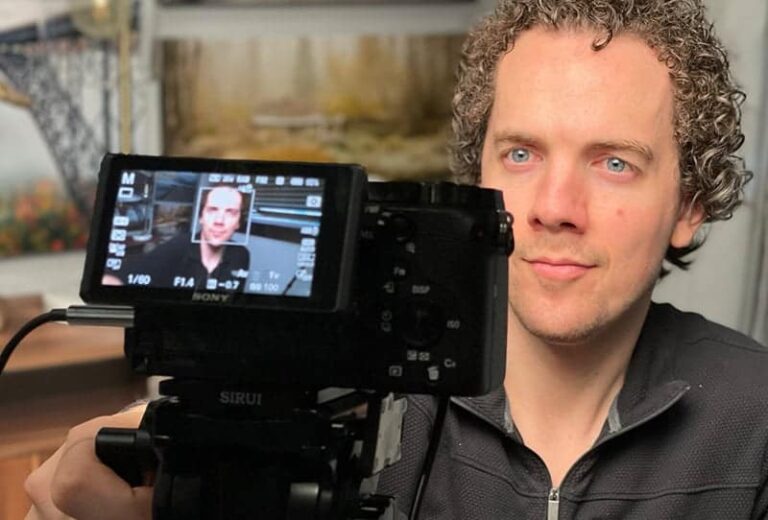If “AMAZING!!!” is the title of your video, then you won’t get amazing views. Why? Because it’s not an amazing title, and no matter how many subscribers you have, the title and thumbnail of your video are the most important part of getting clicks.
A good title will capture a viewer’s attention by offering to impress them, entertain them, or (best of all) answer the questions they’re already asking. A good title is concise and clear for a viewer to understand while being catered to a specific audience at the same time.
Good titles get views, bad titles don’t. This isn’t about clickbait (clickbait titles might get clicks, but they also get clicked away). Read further to learn how to craft your title, then it’s up to you to make sure your video fulfills that promise.
Tools to Help Write Your Title
The first thing you need to understand is how titles work on Youtube. On browsing or search screens, YouTube cuts off titles after the 60th character, so any characters after that won’t help you get views. So keep your titles below 60 characters.
YouTube viewers have short attention spans as well, so the first four words in your title are the most important. If you can attract viewers with just four words of your title, then you’ll be in a good place.
Second, the internet has practical tools that you can use to analyze and improve your title.
Before you go any further, write down a tentative title. Then write another one. continue writing down several iterations of your title. Then, you’ll have an array to choose from. You can compare them and choose the best one.
Now that you have some ideas, you can use YouTube’s search function to see how well your title will perform. Simply type your title into the search bar and take a look at the results. This should show you videos with similar titles.
Take one of the resulting videos, and compare the view count to the subscriber count. If it has a lot more views than subscribers, then it’s a good title. If it has a lot more subscribers than views, then it’s either a very recent video, or it’s a bad title and even their subscribers weren’t interested.
You can also use sites like Headline Analyzer to check the quality of your title. This site does require you to make an account in order for you to use it, but it will help you workshop your title and make it the best it can be. The account is free, and you can use your YouTube channel name and URL to make it, which is what I did when using it to workshop an example title in the next section.
Another great thing to do is to compare your title to those of other creators in your niche. How do successful creators in your field structure their titles? What kind of language do they use? Study their titles, take inspiration from them, and adapt your title craft, not necessarily to match, but to make titles that work just as well or better.
Check out this video to see more suggestions as he critiques other creators’ video titles:
Hook Viewers
Your title and thumbnail work together to create the hook that interests viewers in your video. So, what sort of title will create that hook?
You might recognize the term “hook” from a literature class back in school, but while this has the same idea, the execution is different. A hook in an essay or work of fiction can be several sentences long: a quote, a statistic, an anecdote, a question, or something poetic.
With a YouTube video title, you get 60 characters at best, or only four words to catch the attention of someone with a really short attention span. That’s not enough time to give a quote or tell a story, and poetry isn’t often what YouTube viewers are looking for, so how do you get viewers’ attention in so short a space?
You have to stand out.
Answering specific questions is one of the best ways to get clicks. An impressive statistic “Best ____ in the World” or an answer to a specific question “How to ____ With a ____” could capture viewers’ attention, as long as it fits within their interests.
Use descriptive language in your title to tell your viewers what it’s about. The title “AMAZING!!!” won’t attract viewers because it doesn’t tell them what’s going on in your video that’s amazing. “Amazing Ski Trip” or “Amazing Donut Recipe” are both better because they use descriptive words, but they’re still not great.
Let’s use Headline Analyzer to improve the Ski Trip title. “Amazing Ski Trip” gets a score of 43. Let’s try “How I had an AMAZING Ski Trip.” That’s bumped it up to 61, but there are too many common words.
Let’s try making it more specific. “How I had an AMAZING Ski Trip in Montana.” There we go! 71 on the Headline score, and 80 for SEO. Let’s try pushing it a bit further: “How I had an AMAZING Ski Trip in Montana: Great Experience!” That gets a Headline score of 80 and an SEO score of 81.
If I actually had made a video about skiing in Montana, I would keep following the suggestions to see if I could make it any better, but for the sake of the article, I’ll leave it there.
Good hooks make viewers ask questions.
If your video isn’t targeted at people who are already asking questions, you can use your title to make them ask the questions that your video will answer. Create suspense by making promises (just make sure you fulfill those promises in the video, else you’ll lose more viewers than you gain). Make them want more.
Create a sense of urgency by strategically using power words and CAPS.
Put your description of the video before numbers, subtitles, or series names. In most cases, the descriptive language in the title is the part that will bring in new viewers. While viewers who already know and love a series will watch the video that’s part of that series, new viewers are looking for something specific.
To illustrate this using the previous example as if it were a vlog, ” How I had an AMAZING Ski Trip in Montana: Great Experience! Vlog 78″ will perform better than “Vlog 78 | How I had an AMAZING Ski Trip in Montana: Great Experience! “

Know Your Target Audience
The worst mistake a beginner can make is to assume that their content is targeted at everyone, and then do nothing to tailor their work to match their audience.
It’s impossible to target everyone. 500 hours of content are uploaded onto YouTube every minute, and viewers have lives outside of watching videos. They’re only going to take time to watch your content if it’s the kind of thing they like.
So take your content, be it educational or entertainment, and use it to figure out who your ideal audience is. What age group do you expect would be interested in and enjoy your videos? What type of people want you to teach them? What type of people will listen to your particular sense of humor? Who would be invested in the stories you tell?
At the same time, don’t use jargon in your title that only experts or long-term viewers will understand. Use terms that are clear enough for any outsider or beginner to know what you’re talking about. That way, you can introduce people to your area and gain viewers at the same time. Several of my current hobbies stem directly from that sort of beginner inclusion on YouTube.
Answer the Questions Your Audience is Asking
When you know who your audience is, the best thing you can do is answer their questions. If your title doesn’t interest your audience, they won’t click on it.
YouTube videos are presented to viewers in a few different ways: they come up in searches, they’re recommended on the home screen or to the side of another video, or the viewer sees them on your channel page. Either way, the title is the thing that will get them watching. Even your most devoted viewer will pass on a video if the title doesn’t pique their interest.
This will depend on the type of viewer.
When viewers are searching YouTube to find a solution to their problem, they’re looking for videos with titles that promise answers to their specific questions.
In this case, your title needs to do just that: show that you’re about to answer a specific question. Titles like “How to ____” or “Why ____” might be the way to go here. If not, and your content might lend itself to different starts, it still needs to clearly and concisely show that you’ll answer their question.
When viewers want to be impressed or entertained, they’re likely to either browse their recommendations or channels that they already know.
These viewers may be interested in videos with titles like “Top 10 ____,” “First Ever ____,” or “World’s Biggest ____.” Use strong, persuasive words that grab their attention in conjunction with descriptive words so they know what it’s about.

When you know what your viewers want and what questions they’re asking, dig a little deeper and figure out what they need. When you know their intent, you can give them both what they want and what they need. Promise to give them what they want in the title, and in your video, give that to them, along with what they need.




